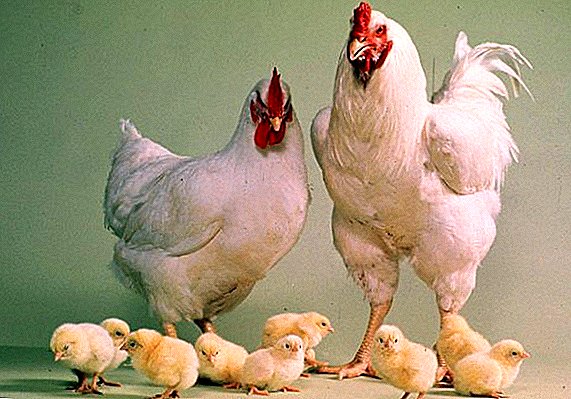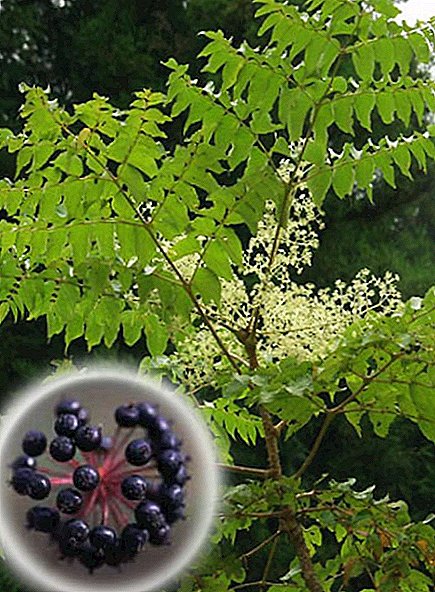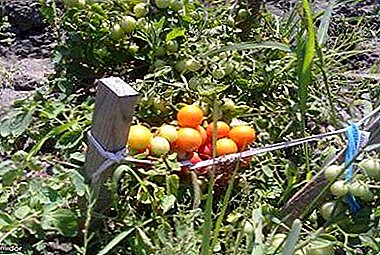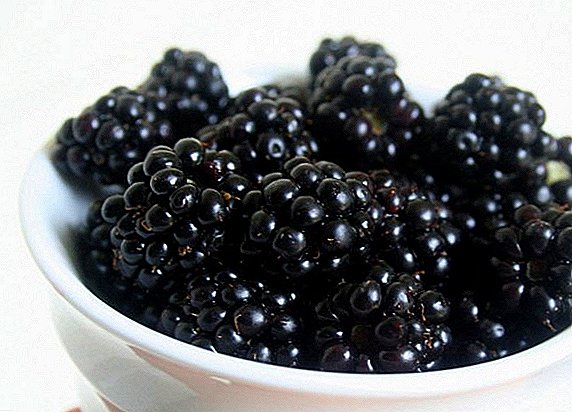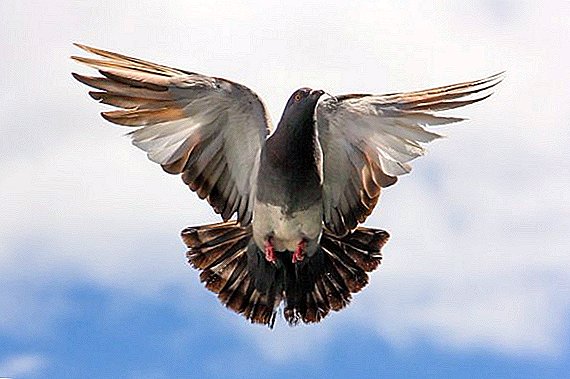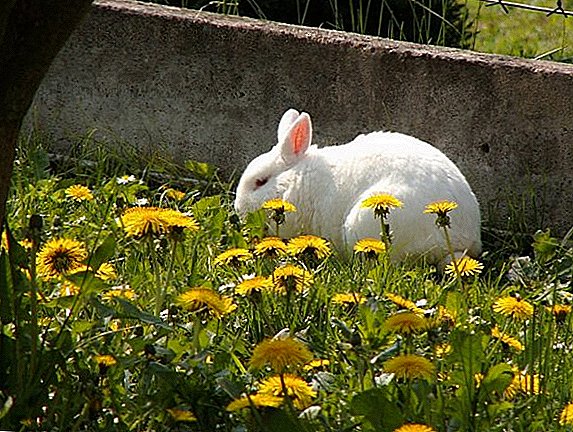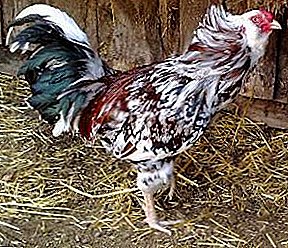
There are many different breeds of sports and decorative hens, one of the most popular is the Orlovskaya. Several centuries ago, breeders brought a rather interesting category of these birds. The history of their creation is quite interesting ...
We can not ignore the fact that in the past century it was the most popular variety of chickens. At the moment, Oryol chickens are not so common, but are still quite in demand.
How the chickens of this breed first appeared is still a mystery. Previously, these chickens were called Giland. In Russia, the nineteenth century, this breed was quite widespread.
When the fashion for them passed, this led to the fact that this family was practically derived. In 1914, the standards of the Russian Imperial Society were established.
This species is currently on the verge of extinction. for one simple reason - an incredible number of new subspecies. Oryol cocks can be used in the same way as fighting ones, but, first of all, they breed this breed for general use. The valuable gene pool is preserved in the VNITIP collection.
Description breed Orlovskaya
 This is a completely unique domestic breed of chickens, which differs from others in its extraordinary plumage and not only. They are quite unpretentious, they perfectly tolerate any climate, egg production is not high. Roosters are quite aggressive. Young chickens begin to run late.
This is a completely unique domestic breed of chickens, which differs from others in its extraordinary plumage and not only. They are quite unpretentious, they perfectly tolerate any climate, egg production is not high. Roosters are quite aggressive. Young chickens begin to run late.
Young animals of this breed in normal conditions to grow quite difficult - you want to pay them a lot of attention. Chickens grow very slowly, and the plumage appears late, moreover, the young are often suffering from "krivorotosti". Only at the age of two, this subspecies reaches full development and then we can see their true beauty. This species is peculiar to fawn, calico and black shades of color.
Features
 Oryol hens are excellent representatives of their species. These chickens differ from other individuals by their "exterior". Their head is not very big, the back of the head is wide and the curved beak is short. Roosters have a short comb, which is slightly flattened to the head, from which grows many small feathers sticking out in different directions. They also have a very powerful and wide body, thick and long legs. The plumage of the neck at the top is swollen, and narrowed at the bottom.
Oryol hens are excellent representatives of their species. These chickens differ from other individuals by their "exterior". Their head is not very big, the back of the head is wide and the curved beak is short. Roosters have a short comb, which is slightly flattened to the head, from which grows many small feathers sticking out in different directions. They also have a very powerful and wide body, thick and long legs. The plumage of the neck at the top is swollen, and narrowed at the bottom.
Brow arc over the broad frontal bone makes the bird look especially aggressive. The tail is placed at right angles to the line of the back. His whole appearance speaks of the strength and power of this fighting bird.
The hens of this variety have a small comb, sideburns are slowly moving into a kind of lush beard. The tail is not large, it grows a large number of feathers. These chickens have a fairly slim, athletic body and all their appearance resemble fighting breed. Adults differ in extraordinary endurance and not capricious content and diet. Here are some features that can only be attributed to this breed:
- bloated mane;
- unusually wide frontal bone;
- big height and weight;
- muscular torso.
There is also the Oryol dwarf form of this group of chickens. They have a very gentle, but at the same time, dense constitution. Outwardly, they are very similar to those of a normal form, only of much smaller size. Some poultry farmers - amateurs probably do not even suspect that there are two independent branches of this breed - the Russian and the German.
 Dwarf silk chickens are striking in their beauty and softness. They just want to squeeze them closer ...
Dwarf silk chickens are striking in their beauty and softness. They just want to squeeze them closer ...
For good care of chickens you need to think about the insulation of the roof of the chicken coop from the inside. Read about how to do it here.
Varieties of this species are preserved in scientific institutions in order to create a genetic reserve, so as not to lose the endangered species at all. A distinctive feature of this category is the high yield of high-quality fine-fiber meat, not unimportant factor is the low content of internal fat. The instinct of incubation in these birds at a very high level. Daily chickens have a light yellow color with longitudinal stripes on the back.
In Russian-style Orlovskih hens, the development is rather slow.
A photo
In the first photo you see a beautiful specimen of a calico-colored female:
And in this photo the male in all his glory sits proudly on the fence:
Here in the photo are chickens of the Oryol calico breed in their usual henhouse:
In this photo, a couple of rare Oryol calico hens in their “home”:
Oryol hens in the courtyard behave quite calmly:
Like most chickens, representatives of this breed can and love to walk even in cold weather:
Several chickens climbed onto the roof of the chicken coop:
The subtleties of growing and care
With proper care, Oryol hens will grow well and quickly.
Juveniles should be given a balanced feed, which is no different from what should be given to ordinary subspecies. Combined feeds that are designed for other agricultural birds are perfect.
For layers it is necessary to build nests, which should be at a height of about 1 meter from the floor level. As we said earlier, the chicks do not grow very quickly, which is not true of the dwarf breeds, the growth rate in them is much higher and they are less whimsical in content. Dwarf individuals need more active walks. Oryol hens are quite aggressive, so they do not need to be kept in cages with other breeds.
Productivity Characteristics
 This variety is quite strong constitution, well developed. If you decide to breed Oryol breed, then you need to familiarize yourself with the productivity of this species, the nominal weight of their body, the number of eggs laid. The annual productivity of this family is not very high, here are some of the indicators:
This variety is quite strong constitution, well developed. If you decide to breed Oryol breed, then you need to familiarize yourself with the productivity of this species, the nominal weight of their body, the number of eggs laid. The annual productivity of this family is not very high, here are some of the indicators:
- 140-160 eggs laid in one year;
- egg weight - 60 grams;
- live weight of chickens - 2.5 - 3 kg;
- live weight of the rooster - 3.5 - 4kg.
- the color of the egg shell is light beige.
The performance characteristics of the dwarf breed of these chickens:
- live weight of hens - 0.6 - 0.7 kg;
- roosters -0.8 - 1.00 kg
- egg production - 100 eggs;
- egg weight - 37 - 39 grams.
Juveniles begin to rush at a rather late age, and this is considered a disadvantage. Oryol hens were always bred for the sake of meat and eggs. To increase egg production, hybrids are used, which are successfully developed by experienced breeders. The best indicators of hybrid individuals - 285 eggs, weighing 62 grams. The meat and eggs of this category of bird is considered very tasty.
Note that the German Orlovsky chickens are significantly inferior to their Russian counterparts, and this, in turn, has a beneficial effect on the viability of young individuals and the productivity of adult birds.
Where can I buy in Russia?
 Despite the fact that this breed is distinguished by unpretentiousness in keeping and feeding, it is hardy and very strong, it is not diluted on an industrial scale.
Despite the fact that this breed is distinguished by unpretentiousness in keeping and feeding, it is hardy and very strong, it is not diluted on an industrial scale.
This family belongs to the rare, endangered species, therefore this bird is bred only by amateur breeders. They will acquaint you with the rules of breeding birds.
The most popular are the following farms, where you can choose and buy chickens or incubator eggs of hens of Orlov breed:
- Village Kurkovo 33, Moscow Region, Lukhovitsky District, telephone: +7 (985) 200-70-00.
- Take orders for hatching eggs and chickens from this family in the farm city of Saratov, telephone for communication: +7 (904) 242-95-77.
Analogs
Oryol hens are a kind of family of birds. They are unique in nature, and it is very difficult to find a replacement for this species. If you can not find representatives of this type, you can replace them with similar ones. Of course, the analog will not be the desired copy.
Here are some members of the chicken family of the egg direction, which can compete with the Oryol hens:
- Malay Fighting. They have the same dense constitution, strong legs and slender body, well-developed bones. The musculature of the tibia of both breeds is developed almost equally. Productivity and egg production in those and others is almost at the same level.
- Yurlovsky vociferous hen. Similar in constitution, they are also distinguished by good productivity and endurance. In addition, they have a wonderful voice, so they will delight their masters with their wondrous singing.
Summing up, we can confidently say that this type of chickens is characterized by high productivity and is one of the best for breeding. The minus of the breed is pretentiousness in care and high requirements for conditions of detention.


